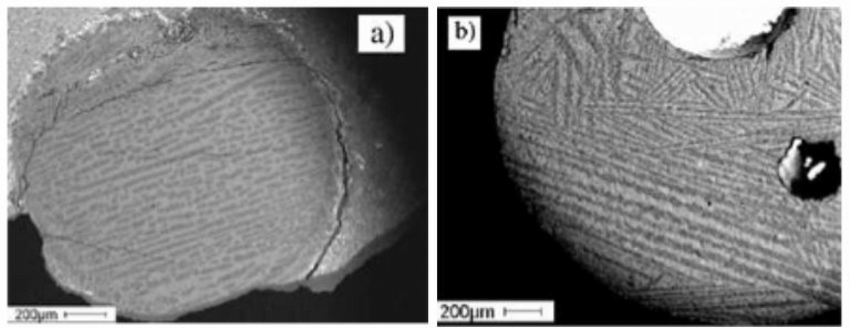
 Credit: P. Duggan et al., 2003, Astronomy & Astrophysics, vol. 409, pg. L9
Credit: P. Duggan et al., 2003, Astronomy & Astrophysics, vol. 409, pg. L9
The Effects of Gamma Rays on Man in the Moon Chondrules
The origin of rocky, or terrestrial, planets is very much a mystery. One clue resides in the debris which floats around the solar system in the form of asteroids, since these bodies may represent the building blocks from which planets can form. Asteroids are difficult to study in space, but every once in a while a piece of an asteroid may fall to earth, survive the passage through the atmosphere and be found on the surface as a meteor. Some such meteorites contain peculiar round grains called chondrules, which appear to have formed rapidly from molten drops in the solar nebula. The energy source which melted the drops in the first place is not known. Some astronomers believe that the gamma-ray and X-ray radiation from a nearby gamma-ray burst might have done the trick. To test this idea, astronomers placed rocky material in a gamma-ray furnace to see what the effects would be. Image a), above left, shows an electron microgram of a chondrule from the Allende meteorite; the laboratory sample from the gamma-ray furnace is shown in image b) on the right. The lab samples appear very similar to the actual Allende samples.
Last Week *
HEA Dictionary * Archive
* Search HEAPOW
* Education
Each week the HEASARC
brings you new, exciting and beautiful images from X-ray and Gamma ray
astronomy. Check back each week and be sure to check out the HEAPOW archive!
Page Author: Dr. Michael F. Corcoran
Last modified Tuesday, 27-Feb-2024 10:08:18 EST


